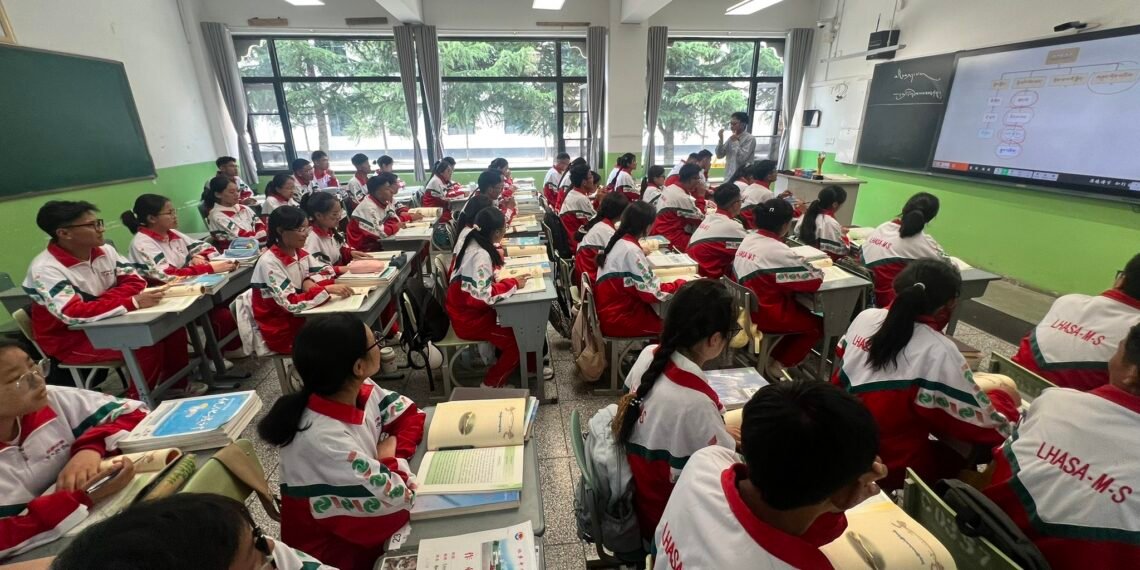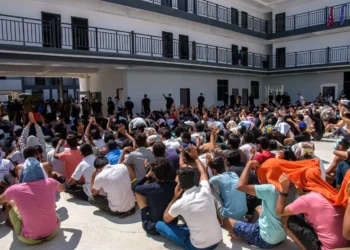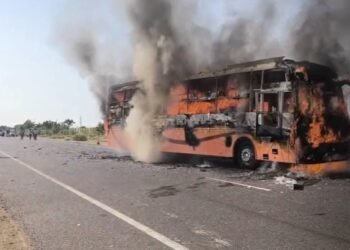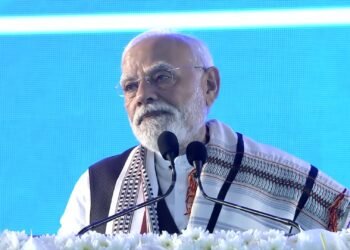In the remote highlands of Tibet, a silent crisis is unfolding. Tibetan children as young as four are being separated from their families and placed in Chinese-run colonial boarding preschools—institutions designed to erase their language, faith, and identity. This is the second part of a five-part series based on the Tibet Action Institute study titled When They Came to Take Our Children—an inside look at how China’s assimilation campaign begins in early childhood.
BY Navin Upadhyay
July 13, 2025: On the Tibetan plateau, in villages scattered across snowbound valleys and windswept highlands, a quiet devastation is unfolding—one that does not involve tanks or tear gas, but classrooms, uniforms, and the slow erasure of memory.
Tibetan children, many as young as four or five, are being separated from their families and placed in sprawling Chinese-run boarding schools. These institutions, often surrounded by high fences and watchful administrators, do not simply teach math and reading. According to the Tibet Action Institute’s 2021 report “When They Came to Take Our Children”, they function as tools of cultural engineering, designed to replace Tibetan language, faith, and identity with the machinery of Mandarin, Maoism, and loyalty to the Chinese Communist Party.
“Tibetan children are being raised by the Chinese state in colonial boarding schools designed to strip them of their language, religion, and cultural identity,” the report warns.
Language as the First Casualty
The first thing most children lose when they enter these schools is their voice.
Once home to chants in the lyrical tones of central and Kham Tibetan dialects, their speech is now corrected, reprogrammed, and eventually replaced. Mandarin Chinese is not only the medium of instruction—it is the language of survival within these schools. Students are told to use it during lessons, during meals, during dormitory hours. Speaking Tibetan is discouraged; sometimes, punished.
The report explains that “Tibetan children are taught almost entirely in Chinese, by teachers who are mostly Han Chinese, and forced to speak Chinese in day-to-day interactions at school.”
The Tibetan language—once passed down from elders in sacred oral traditions, religious rituals, and everyday storytelling—is being deliberately edged out of existence in these children’s minds. In some schools, even Tibetan-speaking teachers have been replaced by Han Chinese staff unfamiliar with the region’s history or values.
READ: Arunachal School Closed After Sexual Assaults, Mob Lynching
“The Chinese government is systematically eliminating Tibetan-medium education from the schooling system in Tibet,” the report states bluntly.
This is not an unintended side-effect of modernization. The shift is central to China’s assimilationist strategy. The state’s own policies aim to create a “common national language environment,” with Mandarin as the unifying tongue of Chinese identity. But for Tibetans, this “unification” comes at the cost of unmooring an entire generation from its cultural roots.
“They Take Away Our Children” ( Part-1) — Tibet’s Tragic Preschools#ErasingTibet #VoiceOfTibet #SaveTibetanChildren #CulturalGenocide #YarlungTsangpo @DalaiLama @PemaKhanduBJP @TibetParliament @TibetanTruth @TibetNetwork https://t.co/GdK2irxL84
— POWER CORRIDORS (@power_corridors) July 11, 2025
Mao at the Blackboard
Inside the classrooms, learning is framed through a singular lens: loyalty to the Chinese Communist Party.
Framed portraits of Mao Zedong and Xi Jinping hang above blackboards. Patriotic songs echo through hallways in the early mornings, and students recite CCP slogans as part of their moral education. A child may spend hours learning about China’s “liberation” of Tibet but never hear the name of the Dalai Lama or learn about traditional Tibetan governance.
The report explains:
“The education Tibetan children receive at these schools is designed to make them identify as Chinese citizens and loyal Communist Party members rather than as Tibetans.”
Children are instructed that religion is a remnant of the past, and Tibetan Buddhism is painted as “superstition” that impedes progress. In this carefully curated reality, temples are omitted from textbooks, and spiritual leaders are cast as relics of an undesirable past. Students are taught to believe that their parents’ and grandparents’ cultural practices are backward—something to be forgotten, even rejected.
“They want Tibetan children to grow up with Chinese hearts,” said one exiled Tibetan teacher interviewed by the Tibet Action Institute.
READ: AI-171 Crash and Boeing’s History of Blaming Dead Pilots
In Tibet, religion is not just belief—it is architecture, rhythm, identity. But within the confines of these state-run boarding schools, it is absent, even forbidden.
Children are not allowed to wear prayer beads. Traditional robes are replaced by regulation uniforms. Religious holidays pass unacknowledged. In some cases, students are told that even whispering Buddhist mantras can be reported as disobedience.
The report reveals:
“Children are explicitly taught that belief in religion is backward and that allegiance to the Communist Party must come above all else.”
These restrictions reach beyond school walls. Some parents are warned not to discuss religious matters during rare phone calls or holiday visits. A mother quoted in the report says her son came home for summer break refusing to enter a monastery or join his family in prayer. He had learned to fear what was once sacred.
A Regimented Life, Isolated From Home
Boarding school life is structured with military-like precision. Wake-up calls, national flag ceremonies, Mandarin recitations, moral education blocks, and homework assignments consume the day. Recreation is minimal and monitored. Communication with parents is rare, sometimes limited to brief, supervised calls during holidays.
“Boarding schools are highly regimented environments in which students are cut off from their families and communities for most of the year,” the report notes.
Most children see their homes only once or twice a year. And when they return, many have forgotten how to speak fluently with their grandparents. They hesitate before making offerings at household shrines or participating in local rituals. “They look like our children,” said one grandfather quoted in exile, “but they return as strangers.”
These schools, often built far from villages, are designed not only for education but disconnection—a controlled environment that raises children to admire the flag more than the family, the Party more than the priest.
A Future Unmoored
The long-term effects of this system are not merely cultural—they are psychological. Educators in exile report signs of anxiety, identity loss, and alienation among children who escape or are smuggled out of the system. Once fluent in their native language and beliefs, they now struggle to reconcile who they were with who they have been told to become.
A senior monk in Dharamshala, reflecting on the future of Tibet’s spiritual lineage, said:
“A child who cannot name their lineage, who cannot recite a prayer, who has no memory of Losar or butter lamps—how will they pass anything on?”
A Generation on the Brink
The Tibet Action Institute calls this system the most widespread form of state-sponsored assimilation in Tibet since the Cultural Revolution. More than one million Tibetan children are believed to be enrolled in state-run schools, and hundreds of thousands are thought to be in full-time residential facilities.
“This colonial boarding school system shares core features with those found in the history of countries such as Canada, the United States, and Australia, where Indigenous children were taken from their families and communities in the name of assimilation.”
And yet, while international institutions begin to acknowledge the magnitude of this campaign, inside Tibet the silence remains—kept by fences, fear, and the steady hum of Mandarin in classrooms where Tibetan once sang.













